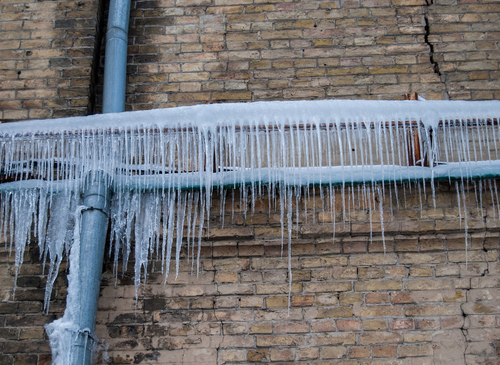Just how do you actually feel in regards to Prevent Frozen Pipes ?

Winter can wreak havoc on your pipes, particularly by freezing pipelines. Below's how to prevent it from occurring and what to do if it does.
Introduction
As temperature levels decrease, the danger of frozen pipes rises, possibly causing costly repairs and water damages. Comprehending how to stop frozen pipes is critical for house owners in cold environments.
Comprehending Icy Pipes
What creates pipes to ice up?
Pipes ice up when exposed to temperatures listed below 32 ° F (0 ° C) for extended durations. As water inside the pipelines freezes, it broadens, putting pressure on the pipeline wall surfaces and potentially causing them to burst.
Threats and damages
Frozen pipelines can lead to water system disturbances, building damage, and expensive repair services. Ruptured pipes can flood homes and trigger comprehensive architectural damage.
Signs of Frozen Piping
Determining icy pipelines early can prevent them from rupturing.
How to recognize icy pipelines
Look for decreased water flow from faucets, unusual odors or noises from pipes, and visible frost on subjected pipes.
Prevention Tips
Insulating vulnerable pipes
Cover pipelines in insulation sleeves or utilize warm tape to safeguard them from freezing temperatures. Concentrate on pipelines in unheated or outside areas of the home.
Home heating strategies
Keep indoor areas adequately warmed, especially locations with plumbing. Open up cabinet doors to permit warm air to flow around pipes under sinks.
Shielding Outdoor Plumbing
Garden tubes and exterior faucets
Disconnect and drain pipes garden hoses prior to winter season. Mount frost-proof spigots or cover outside taps with insulated caps.
What to Do If Your Pipelines Freeze
Immediate activities to take
If you think frozen pipelines, keep faucets open up to eliminate pressure as the ice melts. Make use of a hairdryer or towels soaked in hot water to thaw pipes slowly.
Long-Term Solutions
Architectural adjustments
Take into consideration rerouting pipelines away from exterior walls or unheated areas. Include extra insulation to attics, basements, and crawl spaces.
Updating insulation
Purchase top notch insulation for pipes, attic rooms, and walls. Proper insulation aids maintain regular temperatures and reduces the danger of frozen pipelines.
Conclusion
Stopping frozen pipes calls for proactive actions and quick actions. By understanding the causes, indications, and safety nets, property owners can secure their pipes during cold weather.
5 Ways to Prevent Frozen Pipes
Drain Outdoor Faucets and Disconnect Hoses
First, close the shut-off valve that controls the flow of water in the pipe to your outdoor faucet. Then, head outside to disconnect and drain your hose and open the outdoor faucet to allow the water to completely drain out of the line. Turn off the faucet when done. Finally, head back to the shut-off valve and drain the remaining water inside the pipe into a bucket or container. Additionally, if you have a home irrigation system, you should consider hiring an expert to clear the system of water each year.
Insulate Pipes
One of the best and most cost-effective methods for preventing frozen water pipes is to wrap your pipes with insulation. This is especially important for areas in your home that aren’t exposed to heat, such as an attic. We suggest using foam sleeves, which can typically be found at your local hardware store.
Keep Heat Running at 65
Your pipes are located inside your walls, and the temperature there is much colder than the rest of the house. To prevent your pipes from freezing, The Insurance Information Institute suggests that you keep your home heated to at least 65 degrees, even when traveling. You may want to invest in smart devices that can keep an eye on the temperature in your home while you’re away.
Leave Water Dripping
Moving water — even a small trickle — can prevent ice from forming inside your pipes. When freezing temps are imminent, start a drip of water from all faucets that serve exposed pipes. Leaving a few faucets running will also help relieve pressure inside the pipes and help prevent a rupture if the water inside freezes.
Open Cupboard Doors
Warm your kitchen and bathroom pipes by opening cupboards and vanities. You should also leave your interior doors ajar to help warm air circulate evenly throughout your home.

I was shown that report about How To Avoid Freezing Pipes through a friend on another web address. Sharing is caring. Helping others is fun. Thanks a lot for going through it.
Explore
Comments on “Avoiding Frozen Plumbing in Winter: Pro Advice”